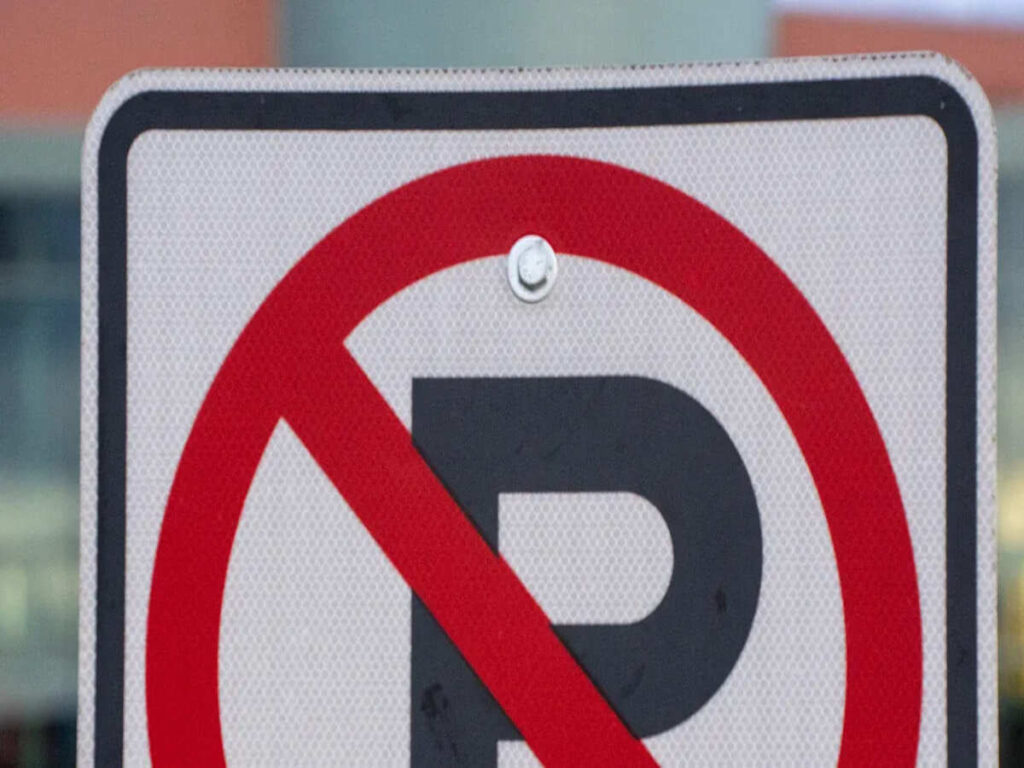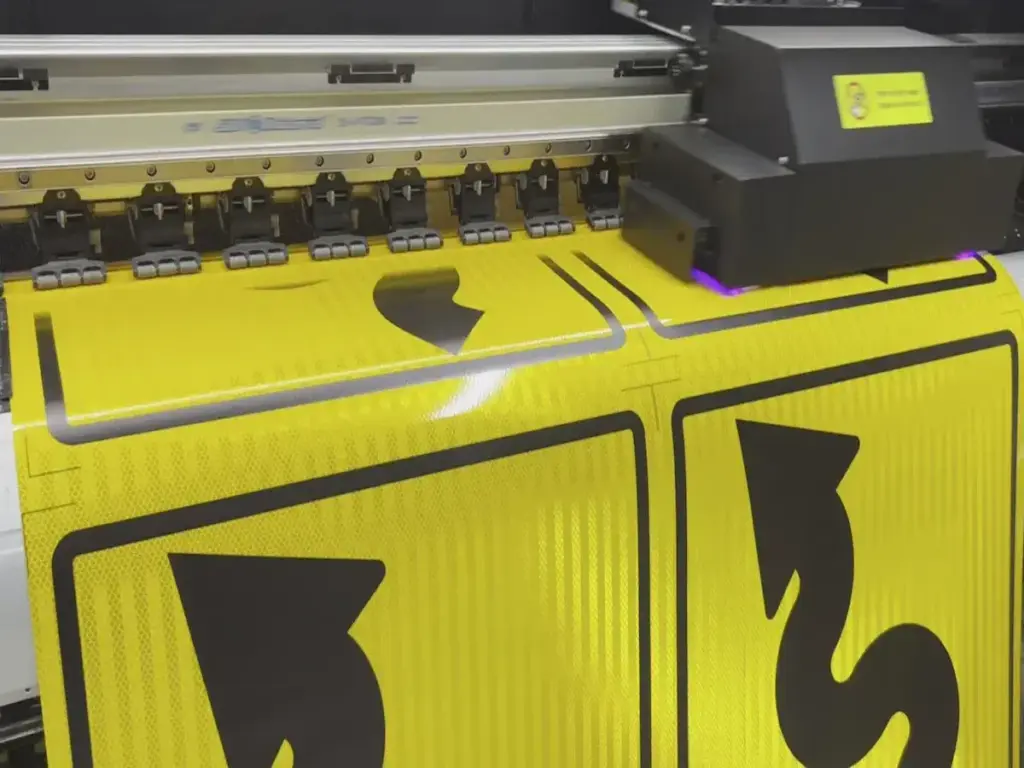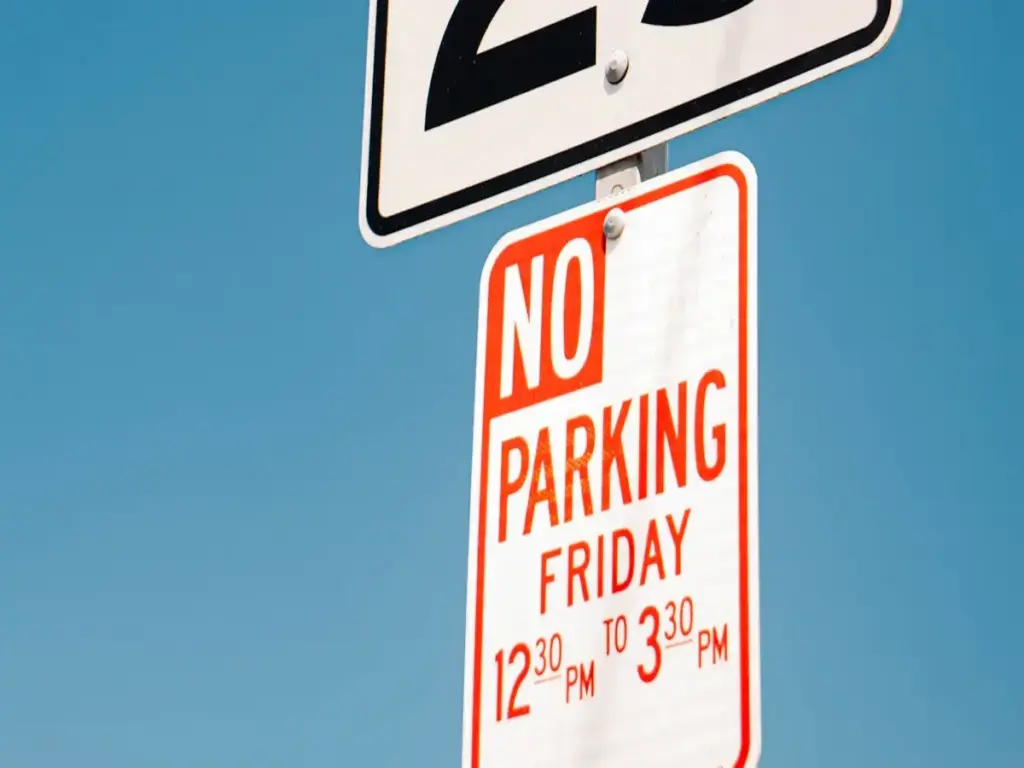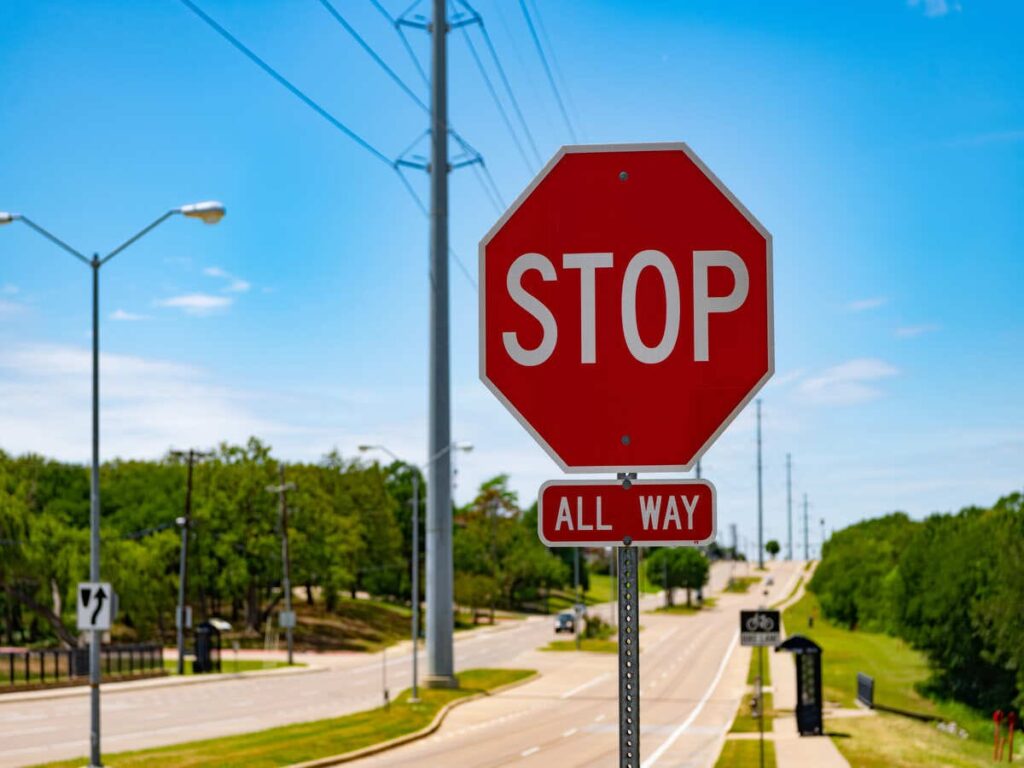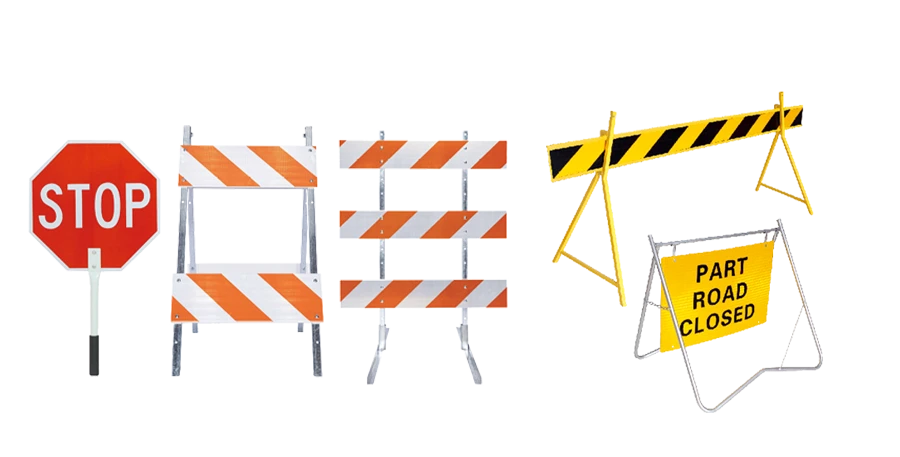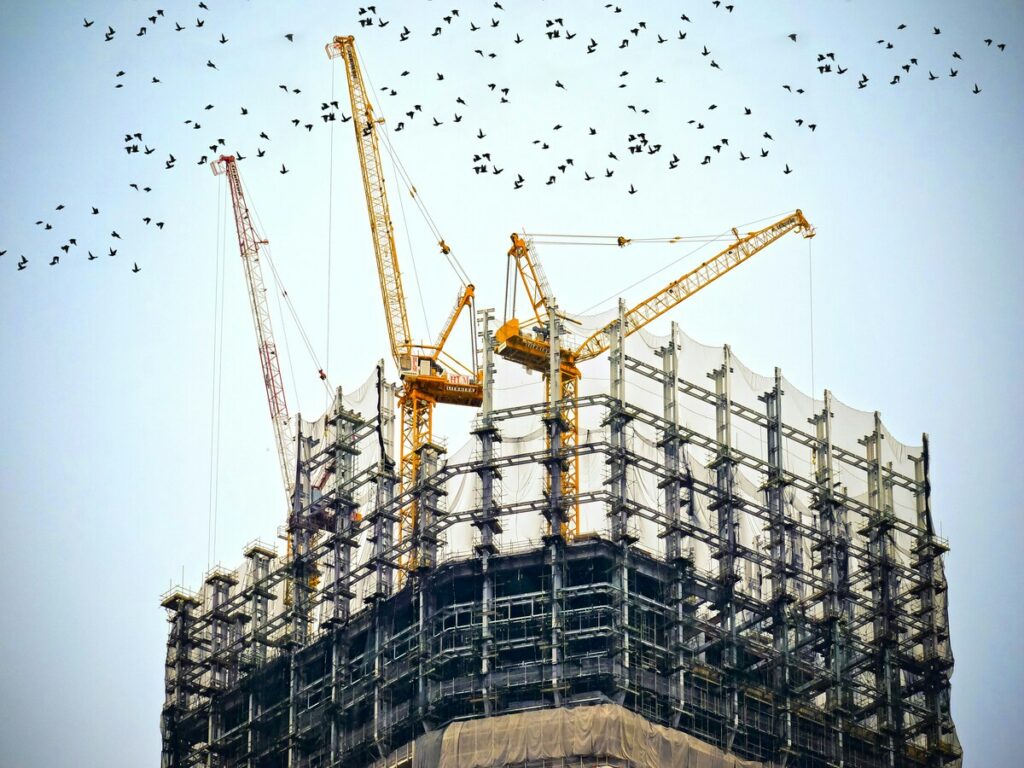
ロードワークゾーンは、労働者と運転手の両方にとって危険な場合があります. 安全を確保し、法的問題を回避するには、オーストラリアの交通法を理解する必要があります. オーストラリアで, traffic cones are often referred to as witches’ hats or traffic pylons. These safety cones play a vital role in road work zones. 彼らは車両を導きます, 安全なエリアにマークを付ける, 労働者を保護します. Acting as visual warnings, they help drivers navigate safely around hazards. 交通を迂回し、明確な境界線を設けることで, 事故を減らし、道路上の全員の安全性を高めます.
As road safety standards continue to evolve, the demand for high-performance safety cones is growing—driven not just by regulation, but also by innovation in materials, 可視性, および耐久性. To learn how these trends are shaping the industry, check out our in-depth analysis in the 2025 トラフィックコーン業界の見通し: 革新と需要は未来を推進します.
The Role of Traffic Cones in Road Work Zones in Australia
What Are Road Work Zones?
Road work zones are areas where construction, メンテナンス, or repairs occur on roads or highways. These zones often involve activities like resurfacing, utility work, or bridge repairs. You’ll typically find them in both urban construction zones and rural areas. These zones can disrupt normal traffic flow, creating potential hazards for drivers and workers. To manage these risks, clear boundaries and traffic control measures are essential.
Why Traffic Cones Are Essential for Safety
Traffic cones play a critical role in maintaining safety in road work zones. Their bright orange color and reflective sheeting make them highly visible, even in low-light conditions like dusk or heavy rain. You’ll notice that they guide vehicles away from closed lanes and direct traffic through safe routes. By acting as visual markers, they help drivers adjust their speed and lane positions, 事故のリスクを減らす. オーストラリアで, plastic safety cones must meet クラス 2 安全基準 or higher to ensure they are effective in all conditions. Proper placement of these cones is vital for protecting workers and keeping traffic flowing smoothly.
- Traffic cones serve as visual guides and safety markers.
- They enhance safety by managing traffic flow effectively.
- Strategic placement ensures compliance with safety regulations.
The Connection Between Traffic Cones and Legal Compliance
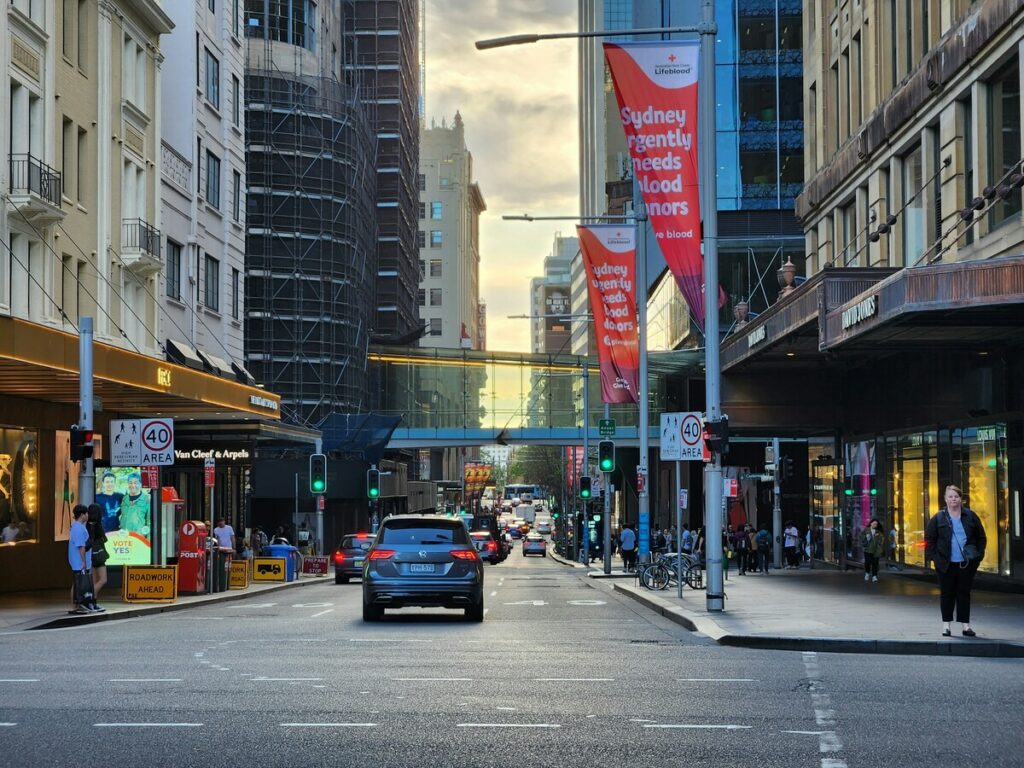
Using traffic cones correctly isn’t just about safety—it’s also a legal requirement. Australian traffic laws mandate that road work zones follow strict guidelines for setup and traffic management. Plastic safety cones must be placed according to these regulations to ensure visibility and effectiveness. Failure to comply can lead to fines, legal actions, and increased risks for workers and drivers. これらの基準を順守することによって, you not only protect lives but also avoid legal complications.
Optrafficは高品質を提供します Australian traffic cones that meet these strict legal and safety standards. OPTRAFFIC traffic safety cones are designed to provide maximum visibility and durability in a variety of work zones. OpTrafficを選択するとき, you ensure your roadwork projects are compliant with regulations while keeping both workers and drivers safe.
Key Australian Traffic Laws Governing Road Work Zones
The Road Safety and Traffic Management Act (RS-TMA)
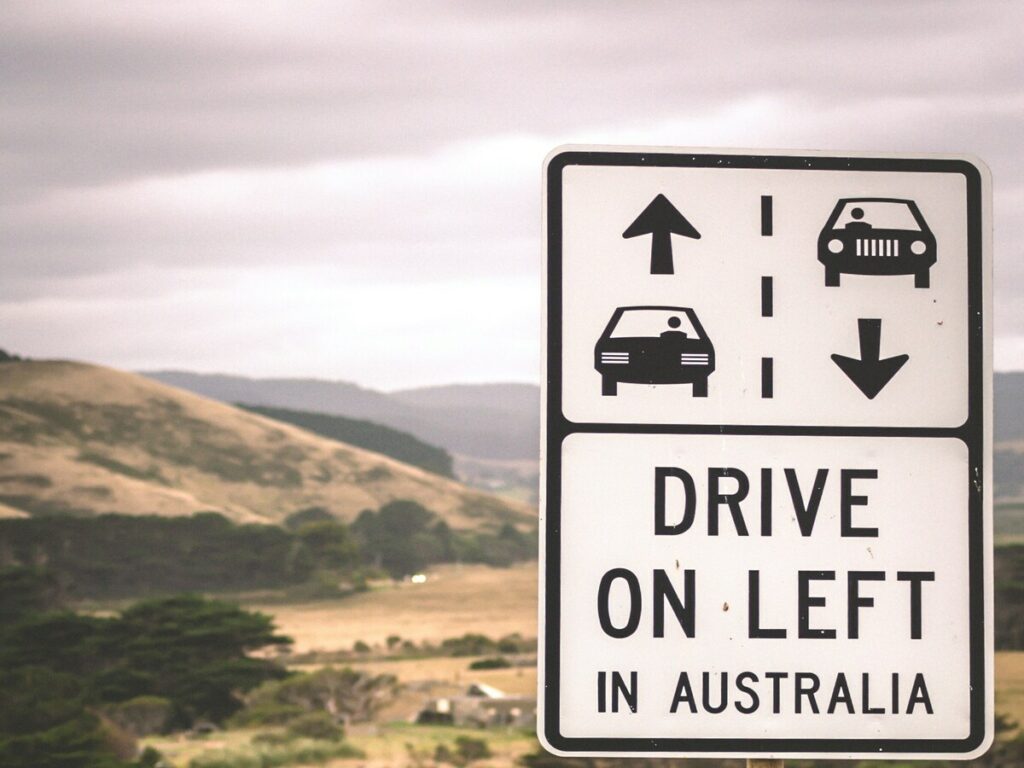
The Road Safety and Traffic Management Act (RS-TMA) outlines essential measures to ensure safety in road work zones. You’ll find that it emphasizes strategies to protect workers, ドライバー, と歩行者. これらには含まれます:
- Full or partial road closures and detours.
- Using rolling roadblocks to safeguard setup and removal operations.
- Enhanced visibility through warning flags, ライト, 変更可能なメッセージサイン.
- Speed management tools like speed safety cameras and drone radar.
- Worker protection using shadow vehicles and intrusion alarms.
The RS-TMA also promotes advanced solutions like インテリジェントな輸送システム (その) to improve traffic flow and safety. Traffic cones play a vital role here by guiding vehicles, marking safe zones, and creating pedestrian pathways. Proper placement of cones ensures drivers can navigate hazards safely, reducing risks for everyone.
Legal Requirements for Road Work Zone Setup
Setting up a road work zone requires strict adherence to legal guidelines. You must ensure the zone is clearly marked and equipped with appropriate traffic control devices. These devices include traffic cones, バリケード, 警告サイン. Cones must be visible and strategically placed to alert drivers to hazards and guide them safely. 都市部, traffic cones often create pedestrian pathways, ensuring their safety and visibility. 緊急時に, plastic traffic cones establish secure perimeters, protecting responders and directing traffic away from danger.
The law also mandates the use of trained personnel, フラッグガーなど, to manage traffic effectively. You should always follow these requirements to maintain safety and avoid legal penalties.
National Standards for Traffic Control Devices (AS1742.3)
The AS1742.3 standard governs the use of traffic control devices in Australia. It provides detailed guidelines for the design, 配置, and maintenance of these devices in road work zones. You must ensure all traffic cones meet these standards to guarantee their effectiveness. 例えば, plastic traffic cones should have reflective sheeting to remain visible in low-light conditions. Proper spacing between plastic traffic cones is also crucial to guide traffic smoothly and prevent confusion.
This standard also emphasizes the importance of clear signage and markings. High-quality pavement markings and the removal of misleading ones are essential. By adhering to AS1742.3, you can create a safer environment for workers and road users alike.
The Legal Requirements for Using Traffic Cones in Road Work Zones
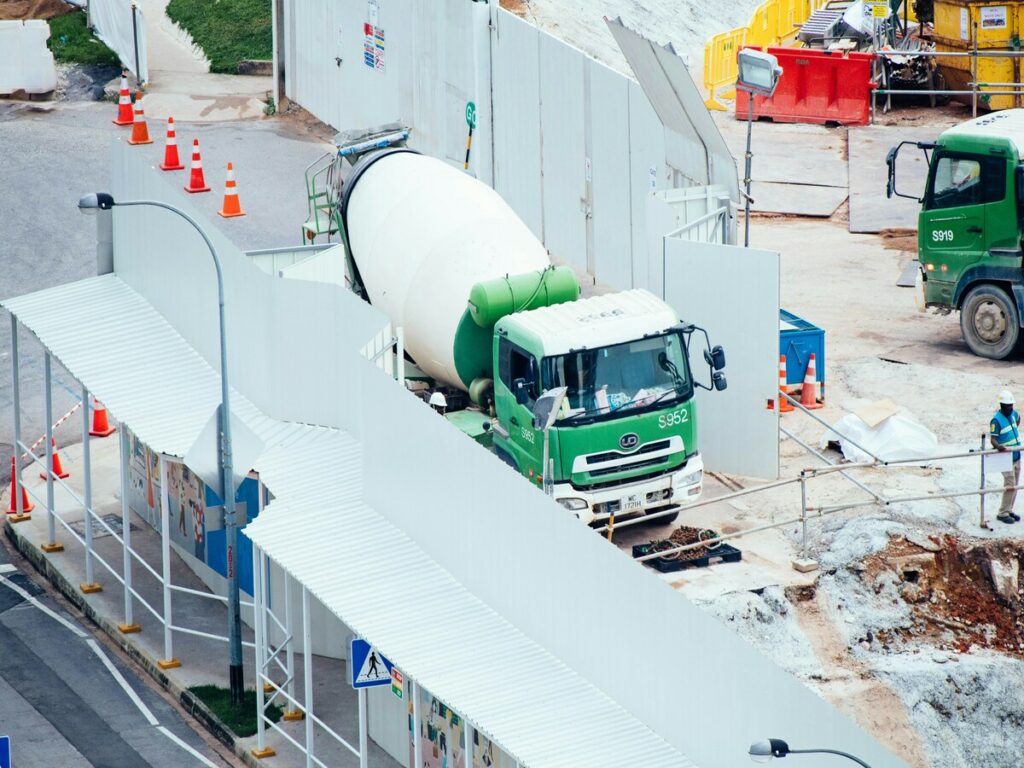
Legal Placement and Visibility Standards for Traffic Cones
Traffic cones must meet specific legal standards to ensure safety and compliance in road work zones. These standards focus on placement, 可視性, と間隔. The table below outlines the key requirements:
| 要件 | 仕様 |
|---|---|
| 身長 | 少なくとも 28 インチ (710 mm) tall for visibility from a safe distance. |
| 反射シート | Must have retroreflective sheeting visible from at least 500 足 (150 m). |
| 色 | Typically orange, with fluorescent orange for higher visibility. |
| 間隔 | Generally between 10 そして 50 足 (3 に 15 メーター) 離れて, depending on speed. |
You should adjust cone placement based on the speed of traffic and the type of work zone. For urban areas with speeds of 25 mph or lower, plastic traffic cones should be spaced 10 足が離れています. In higher-speed zones, spacing may decrease to 5 足. Follow these steps to ensure proper placement:
- Assess the work zone and identify areas needing traffic control.
- Determine spacing based on speed limits and roadway type.
- Use a 20:1 taper rate for lane closures. すべてのために 20 車線の閉鎖の足, extend 1 foot for the taper.
Proper placement and visibility of cones help drivers navigate safely, reducing risks for workers and road users.
Traffic Control Plans and Their Legal Significance
交通規制計画 (TCP) are essential for ensuring legal compliance in road work zones. A well-designed TCP creates a safe environment for workers and the public by clearly marking work zones. It also organizes traffic flow to minimize delays and congestion. The table below highlights the key aspects of TCPs:
| 側面 | 説明 |
|---|---|
| 安全性 | TCPs create a safe environment for both workers and the public by clearly delineating work zones. |
| 効率 | Organizing traffic flow helps minimize delays and congestion. |
| コンプライアンス | Developing and implementing a TCP ensures that legal requirements are met. |
You must adhere to local, 州, and federal regulations when establishing work zones. This ensures that your project meets legal safety and operational standards. A comprehensive TCP not only protects lives but also prevents legal complications.
Compliance with Local and State Regulations
Each state and local government in Australia has specific regulations for road work zones. You must familiarize yourself with these rules to ensure compliance. 例えば, some states may require additional signage or specific cone types for certain projects. Always coordinate with local authorities to confirm that your setup meets all legal requirements. Using compliant traffic control devices, such as plastic safety cones, ensures that your road work zone adheres to national and regional standards.
Failing to comply with these regulations can result in fines, legal actions, and increased risks for workers and drivers. ルールに従うことによって, you create a safer environment and avoid unnecessary penalties.
Penalties and Legal Implications for Non-Compliance with Traffic Cone Laws
Consequences for Misplacing or Misusing Traffic Cones
Misplacing or misusing traffic cones can create serious risks in road work zones. When plastic traffic cones are not placed correctly, drivers may fail to notice hazards, 事故につながる. Improper use, such as using damaged or non-compliant cones, reduces their visibility and effectiveness. 場合によっては, moving traffic cones without proper authorization can be illegal, as it may violate local traffic regulations or traffic control plans. You could also face liability if an accident occurs due to poor cone placement. Workers and pedestrians rely on these safety cones for guidance and protection. Misuse compromises their safety and increases the likelihood of injuries. Always ensure plastic traffic cones meet legal standards and are positioned according to traffic control plans.
Fines and Legal Actions for Inadequate Road Work Zone Setup
Failing to set up a compliant road work zone can result in significant penalties. Authorities may issue fines for not following regulations, such as improper cone spacing or using non-reflective cones. 場合によっては, legal actions may follow if negligence leads to accidents or injuries. 例えば, in urban construction zones, inadequate setups can disrupt traffic flow and endanger pedestrians. You must adhere to local and national standards to avoid these consequences. Proper planning and execution of traffic control measures protect you from legal and financial repercussions.
The Impact of Non-Compliance on Worker and Public Safety
Non-compliance with traffic cone laws directly affects the safety of workers and the public. Without proper cone placement, drivers may enter restricted areas, putting workers at risk. Pedestrians may also wander into unsafe zones without clear boundaries. Accidents caused by non-compliance can lead to severe injuries or fatalities. You have a responsibility to ensure road work zones are safe for everyone. Following legal guidelines minimizes risks and creates a secure environment for all road users.
Best Practices for Legal Traffic Cone Usage in Australia
Adhering to AS1742.3: Australian Standards for Traffic Control Devices
You must follow the AS1742.3 standards to ensure traffic cones meet Australian safety requirements. These standards outline the design, 配置, and maintenance of traffic control devices in road work zones. 例えば, plastic cones must have retroreflective sheeting to remain visible in low-light conditions. Their height and spacing should align with the speed of traffic and the type of roadway.
Regular inspections are essential to maintain compliance. Damaged or faded cones reduce visibility and compromise safety. Replace plastic cones showing wear and tear immediately. Proper adherence to these standards ensures that plastic cones effectively guide vehicles and protect workers. By following AS1742.3, you create safer traffic management scenarios and avoid legal penalties.
Coordinating with Local Authorities for Safe Road Work Zone Design
Collaborating with local authorities is crucial for designing road work zones that prioritize safety while ensuring compliance with state-specific regulations in Australia. Different states and territories may have distinct requirements, but the general principles for safe road work zone design remain the same. Authorities can assist in several ways:
1. Setup: Maximizing Worker Protection
Each state in Australia has its own guidelines for roadwork zone setup to protect workers and minimize risks. 例えば:
- ニューサウスウェールズ (NSW): The NSWの輸送 provides detailed roadwork zone guidelines under the Traffic Control at Worksites (TCAWS) マニュアル. They emphasize using appropriate safety barriers, のような truck-mounted attenuators (TMAs) そして temporary road safety barriers, to ensure clear separation between workers and traffic. Local authorities also work with law enforcement to ensure that these setups are safe and secure, especially in high-traffic areas or during peak hours.
- ビクトリア (ヴィック): The Victoria Road Safety Act 1986 mandates that roadwork zones have visible traffic control devices, 含む 反射的なトラフィックコーン, that meet specific visibility standards. Local councils coordinate with the Vicroads team to approve the use of traffic cones and barriers based on road type and traffic volume.
2. トレーニング: Ensuring Safety Protocols are Followed
Effective safety protocols can only be followed if the team is properly trained. Local authorities play a key role in enforcing state-specific training requirements:
- クイーンズランド (QLD): In QLD, the Transport Operations (Road Use Management) 活動 requires that all workers involved in roadwork zones complete specific training on safety and traffic control. This includes training to handle manual traffic control devices そして pedestrian management, ensuring that personnel are well-prepared to deal with high-risk scenarios.
- 西オーストラリア (の): The Work Health and Safety (WHS) 規則 in WA specify that all personnel involved in traffic control must undergo certification in roadwork safety, which includes understanding proper cone placement そして traffic flow management. Local authorities help facilitate this training and enforce the standards for worker safety across all work zones.
3. Stopping Work: Clear Guidelines for Halting Work When Safety Risks Arise
Ensuring worker safety means knowing when to stop work due to unforeseen hazards. Local authorities often provide the framework for making these critical decisions:
- 南オーストラリア (の上): Under the 道路交通法 1961, when there is an immediate risk to workers’ 安全性, such as inclement weather, equipment failure, or traffic incidents, work must cease. Local authorities, を含む Department for Infrastructure and Transport, help to assess and halt work when these risks are identified. They also ensure the implementation of mobile barriers そして real-time monitoring systems to manage traffic until work can resume safely.
- タスマニア (それ): The Road Management Act in Tasmania requires work sites to be shut down in the event of severe weather or when unexpected hazards arise. The Tasmanian Local Government Traffic Management Act empowers local councils to direct the cessation of work when it becomes unsafe, especially on roads with high pedestrian or vehicle traffic.
4. Addressing Local Challenges
State and local authorities also assist in overcoming unique challenges, such as high-traffic areas or complex intersections:
- オーストラリア首都特別地域 (活動): The ACT’s Transport and Infrastructure Management office helps roadwork teams design zones to minimize traffic disruption. In areas like busy intersections, local authorities mandate the use of temporary traffic signals または pilot vehicles to control the flow of traffic and maintain safety around the worksite.
- ノーザンテリトリー (nt): In the NT, with its unique road infrastructure, remote work zones may require additional support for safe traffic management. Local authorities work closely with roadwork teams to ensure the use of drone surveillance そして traffic monitoring technology to monitor traffic and make adjustments in real-time.
By coordinating with local authorities, you ensure that your roadwork zone setup complies with both local regulations and broader Australian traffic safety standards. Working with state and local agencies ensures that your traffic control devices, 含む 交通安全コーン, 障壁, そして 看板, are used effectively, legally, and to the highest safety standards, minimizing risks for both workers and road users.
Ensuring Effective Traffic Management with Proper Cone Placement
Proper cone placement is critical for effective traffic management. Start by assessing the work zone to identify areas needing traffic control. Use spacing guidelines based on speed limits. 例えば, in low-speed zones, cones should be spaced no more than 10 足が離れています. In higher-speed zones, increase spacing to maintain visibility.
Implement a 20:1 taper rate for lane closures. これはすべての意味です 20 車線の閉鎖の足, extend the taper by 1 foot. Regularly inspect plastic cones to ensure they remain upright and undamaged. Train your team on placement techniques to maintain consistency. Following these practices ensures plastic cones guide drivers safely and reduce confusion in traffic management scenarios.
ケーススタディ: Legal Successes and Failures in Road Work Zone Management
Positive Outcomes from Strict Compliance with Traffic Cone Regulations
Strict adherence to traffic cone regulations has led to numerous safety improvements in Australian road work zones. You can see how proper cone usage enhances safety and efficiency in various scenarios:
- 都市作業ゾーンで, plastic cones created dedicated pedestrian pathways. This ensured pedestrians and drivers could navigate safely without confusion.
- ユーティリティのメンテナンス中, cones marked hazardous areas. This prevented accidents and kept workers and the public safe.
- For large events, plastic cones established temporary lanes. This improved traffic flow and reduced congestion significantly.
- 緊急事態, plastic cones defined safe perimeters. This protected responders and directed vehicles away from danger zones.
- At construction sites, cones clearly marked vehicle lanes. This minimized collision risks and ensured smooth traffic movement.
These examples highlight the versatility of traffic cones. When you follow placement guidelines and safety standards, plastic cones become powerful tools for protecting lives and maintaining order. Proper cone usage not only prevents accidents but also ensures compliance with Australian traffic laws.
Legal Consequences of Failing to Follow Traffic Cone Laws
Failing to comply with traffic cone regulations can lead to severe consequences. Misplaced or non-compliant plastic orange cones often result in accidents and legal penalties. 例えば, in one case, a poorly marked work zone caused a driver to enter a restricted area. This led to a collision that injured workers and resulted in significant fines for the contractor.
Another example involved a construction site where plastic orange cones lacked reflective sheeting. Drivers failed to see the plastic orange cones at night, causing multiple accidents. Authorities imposed heavy penalties on the company for neglecting safety standards.
These failures demonstrate the importance of proper cone placement and maintenance. When you ignore regulations, you risk endangering lives and facing legal actions. By prioritizing compliance, you can avoid these outcomes and create safer road work environments.
Understanding and following traffic laws in road work zones is essential for safety and legal compliance. Plastic safety cones play a pivotal role in guiding traffic, 危険をマーキングする, 労働者を保護します. Their proper use ensures visibility and adherence to Australian standards.
Compliance with traffic laws minimizes risks and enhances safety for everyone. The table below highlights key points to remember:
| Critical Point | 説明 |
|---|---|
| Adherence to Traffic Control Plans | Companies should follow their traffic control plan and ensure proper signage and markings. |
| Use of Clear Signage and Barriers | Clear signage, 障壁, and cones should direct traffic safely around work zones. |
| 速度制限の取り締まり | Implement and enforce reduced speed limits using speed cameras and radar feedback signs. |
| Worker Visibility | Workers should wear brightly colored, reflective clothing to enhance visibility, 特に夜に. |
| Regular Safety Training | Provide ongoing safety training and enforce strict safety protocols for all workers. |
By prioritizing compliance, あなたは労働者を保護します, ドライバー, and pedestrians while avoiding legal consequences. Always use traffic control devices like plastic safety cones effectively to create safer road environments.
よくある質問
What are safety cones and why are they important in road work zones?
安全コーン, often referred to as traffic cones, are essential tools used in road work zones to manage traffic and ensure the safety of both workers and road users. Their bright color and reflective sheeting make them highly visible, 低照度条件でも. They are used to direct vehicles away from hazardous areas, create clear boundaries for workers, and reduce the risk of accidents by providing clear guidance for drivers.
How do safety cones contribute to legal compliance in road work zones?
オーストラリアで, the proper use of 安全コーン is not just about ensuring safety—it’s a legal requirement. The Road Safety and Traffic Management Act (RS-TMA) mandates that roadwork zones must be clearly marked with appropriate safety devices, 含む 安全コーン, to guide traffic and protect workers. Non-compliance with these regulations can result in fines, 法的罰則, and an increased risk of accidents in the work zone.
What legal standards apply to the use of safety cones in road work zones?
To ensure safety and legal compliance, 安全コーン must meet specific requirements regarding placement, 可視性, と間隔:
- 身長: Cones should be at least 28 インチ (710 mm) tall for proper visibility from a safe distance.
- 反射シート: Cones must have retroreflective sheeting visible from at least 500 足 (150 メーター).
- 間隔: Depending on traffic speed, cones should be spaced between 10 に 50 足 (3 に 15 メーター) 離れて.
Failing to comply with these standards can result in legal consequences, including fines and accidents, which is why it’s essential to follow all guidelines for safety cone placement.
What are the penalties for improper use of safety cones in road work zones?
Improper placement or misuse of 安全コーン in road work zones can result in severe penalties, 含む:
- Fines for not following regulatory guidelines for 安全コーン placement and spacing.
- Legal actions if accidents or injuries occur due to ineffective cone placement.
- Increased risks for both workers and drivers, which can lead to reputational damage and financial liabilities for contractors or responsible authorities.
Compliance with traffic safety regulations, including the correct use of 安全コーン, helps prevent these outcomes and ensures a safer work environment.
How can I ensure compliance with traffic safety laws when using safety cones?
To ensure compliance with Australian traffic safety laws when using 安全コーン:
- Follow Traffic Control Plans (TCP): Develop and implement a traffic control plan that outlines the correct placement and maintenance of 安全コーン.
- Use High-Quality Safety Cones: Ensure that 安全コーン are made of durable materials and equipped with retroreflective sheeting for optimal visibility.
- 定期的な検査: 検査する 安全コーン regularly to ensure they are in good condition and positioned correctly to guide traffic safely.
- Train Personnel: Provide training for workers on how to set up and maintain 安全コーン in compliance with safety standards.
Why is it important to maintain proper placement of safety cones in road work zones?
Proper placement of 安全コーン is crucial for creating safe work zones and minimizing traffic-related accidents. Cones guide drivers, マークハザード, and ensure that road users and workers are protected. Inadequate or improperly placed 安全コーン can result in confusion, 事故, and potential injuries. Adhering to legal guidelines for cone placement is essential to keep roadwork zones safe and compliant with Australian traffic regulations.
Can safety cones be used in all types of road work zones?
はい, 安全コーン are versatile and can be used in various road work zones, 含む:
- Urban construction zones: Where traffic flow is highly controlled and cones help separate lanes.
- Rural maintenance areas: Where cones guide traffic around smaller, 一時的な作業ゾーン.
- Emergency response zones: Where 安全コーン help establish perimeters and direct traffic around hazardous areas.
の配置 安全コーン should be adapted based on the type of work, 交通速度, and the surrounding environment.
How can technology improve the use of safety cones in road work zones?
Technology can enhance the use of 安全コーン by making traffic management more efficient and safer. のような革新 automated cone trucks, smart traffic systems, and real-time monitoring allow for faster deployment, more accurate positioning, and reduced exposure of workers to traffic. These technologies ensure that 安全コーン are placed effectively, improving safety and compliance in road work zones.
What is the relationship between safety cones and the Road Safety and Traffic Management Act (RS-TMA)?
The RS-TMA emphasizes the importance of clear traffic management in road work zones to protect workers and drivers. 安全コーン are highlighted as essential devices for ensuring compliance with the Act’s requirements. The Act mandates the use of clearly visible and strategically placed traffic control devices, 含む 安全コーン, to delineate work areas, 車両をガイドします, and reduce risks for everyone in the work zone.

